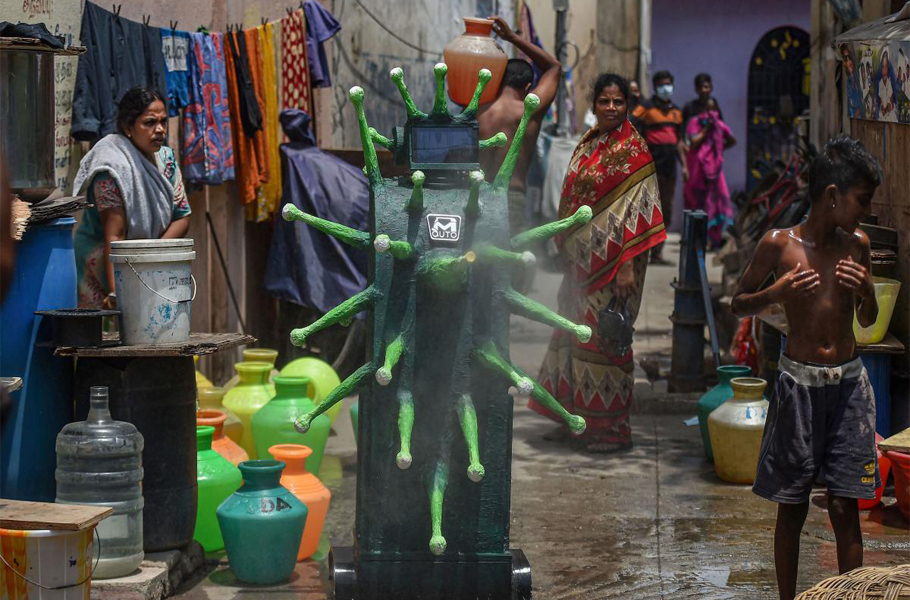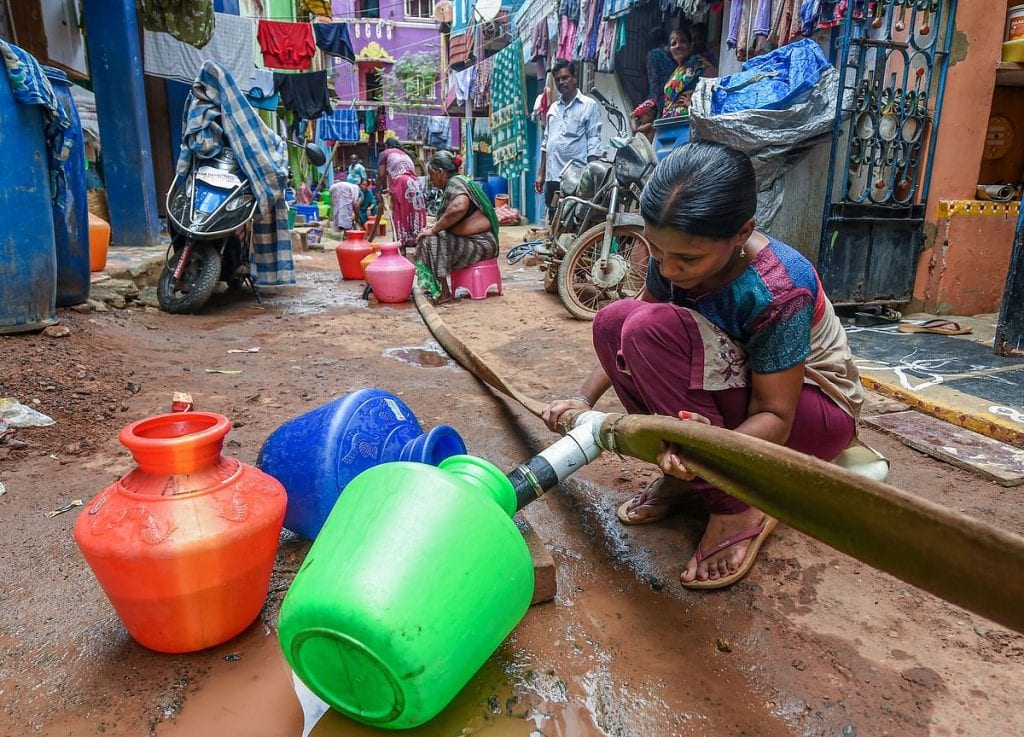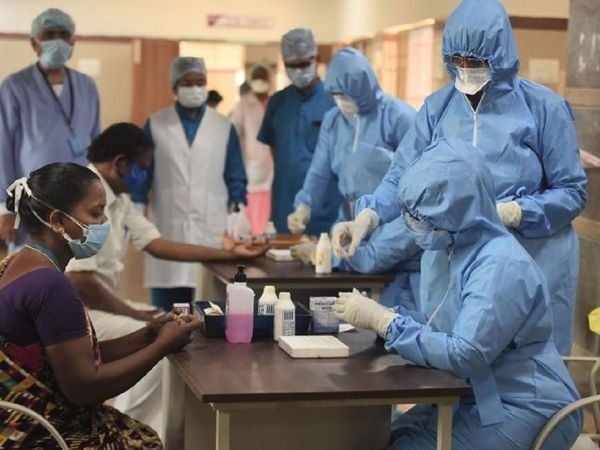
- Home
- News
- Analysis
- States
- Perspective
- Videos
- Education
- Entertainment
- Elections
- Sports
- Features
- Health
- Budget 2024-25
- Business
- Series
- Bishnoi's Men
- NEET TANGLE
- Economy Series
- Earth Day
- Kashmir’s Frozen Turbulence
- India@75
- The legend of Ramjanmabhoomi
- Liberalisation@30
- How to tame a dragon
- Celebrating biodiversity
- Farm Matters
- 50 days of solitude
- Bringing Migrants Home
- Budget 2020
- Jharkhand Votes
- The Federal Investigates
- The Federal Impact
- Vanishing Sand
- Gandhi @ 150
- Andhra Today
- Field report
- Operation Gulmarg
- Pandemic @1 Mn in India
- The Federal Year-End
- The Zero Year
- Premium
- Science
- Brand studio
- Newsletter
- Home
- NewsNews
- Analysis
- StatesStates
- PerspectivePerspective
- VideosVideos
- Entertainment
- ElectionsElections
- Sports
- Features
- BusinessBusiness
- Premium
- Loading...
Premium - India-Canada ties

Bursting at the seams, urban slums became soft targets for coronavirus
Most places in Chennai where a high number of COVID-19 cases were found have been traced to densely populated slum settlements.

Almost all roads leading to Sathya Nagar slum settlement in Thiru Vi Ka Nagar zone of Chennai were busy, with people moving around to fetch water or other essentials and men standing in groups, enquiring about any daily-wage jobs available. In one corner of one of the streets, one man from a group standing near a grocery shop seemed to be unaware that the street too had become a...
Almost all roads leading to Sathya Nagar slum settlement in Thiru Vi Ka Nagar zone of Chennai were busy, with people moving around to fetch water or other essentials and men standing in groups, enquiring about any daily-wage jobs available.
In one corner of one of the streets, one man from a group standing near a grocery shop seemed to be unaware that the street too had become a COVID-19 containment zone.
On seeing the containment zone board, he wondered aloud, “Oh, now this also has become a containment zone?”
“How many have got corona in this street?” a man from the group asks the grocery shopkeeper while getting a beedi.
Just then, a woman approached the shopkeeper and gave him their house key asking him to give it to her husband when he arrives. She told him she was going to the hospital.
After she left, the shopkeeper tells the group of men that the woman was one of those who tested positive for COVID-19 in that street. None of the men showed any reaction or aversion towards the woman or the shopkeeper, as one would have expected.
“Why would we isolate her? It is normal,” says S Kasi, a plumber, who was a minute before enquiring about any jobs available. “A lot of people here have tested positive. But we have a lot of other issues. More than the virus, we have the problem of survival. It is not the virus that would hurt us, but the empty stomachs of our children.”
Thiru Vi Ka Nagar zone in Greater Chennai Corporation was one of the early hotbeds of COVID-19. As on May 30, as many as 633 people from here were hospitalised for COVID-19 and 21 had lost their lives to the disease.
Most places in Chennai where a high number of COVID-19 cases were found have been traced to densely populated slum settlements.
While in other parts of the state COVID patients have had to face social stigma and ostracisation, in slums, people were unaware of such an issue and no social distancing was being maintained.
Toilet and water woes
“For a person born and brought up in slums, it is difficult to maintain social distancing and other norms as we live in cramped houses and use public toilets,” says Muthuvani, a resident of Sathya Nagar. “Our only concern during this pandemic is to feed ourselves and our children.”
Residents also say that the lack of enough toilets poses a great threat since the mass usage of public toilets was said to be one of the reasons for the fast spread of COVID-19.

“The common toilet in Sathya Nagar is near the B block and if we have to use the toilet, we have to walk around 1 km. And to add to this, recently a person was tested positive from our locality and we are worried about what we would do for survival if we are put in home isolation or institutionalised isolation,” says M Annadurai, a resident of C block in Sathya Nagar.
They were not able to convey the need for toilets to the officials and, Annadurai says, they did not know how to proceed further. “Now we are left to face the crisis on our own,” he adds.
According the government, 52 lakh toilets have been constructed in Tamil Nadu until 2018. And over 500 of 654 urban local bodies in the state have been declared free from open defecation under the Swachh Bharat Mission.
Since it is summer and people struggle for water, women in Sathya Nagar say that they cannot think of social distancing if they all ran out of water. The residents are now supplied with water once in two days.
“If the water lorry does not come on time and if they delay by a day or two, then we cannot think of social distancing at all because it will be on first-come-first-serve basis and there will be a huge crowd to get the water from the first water lorry,” says S Kamatchi, another resident in the settlement.
What’s wrong in slums
According to a framework prepared by the Information and Resource Centre for the Deprived Urban Communities (IRCDUC), there are about 1,131 slums in Greater Chennai Corporation of which 896 are tenable slums, while 235 are untenable slums located near water bodies and drainages in the city.
The report also noted that the relocation settlements constructed by the Tamil Nadu Slum Clearance Board at Kannagi Nagar, Semmenchery, and All India Radio land have about 34,724 households of which 23,704 households were in Kannagi Nagar. Apart from that, there are about 9,491 urban homeless spread across the city, living in temporary structures made of tarpaulin or tin sheets.
Experts opine that these densely populated areas comprise the majority of the COVID-19 cases in the state and that the state should work in slums and other densely populated areas.
Activist and adviser to the unorganised workers’ federation R Geetha says that social distancing is not possible even inside their own house as 6-8 people live in a 10×10 room. According to Geetha, around 30% of the city’s population live in slums, but this 30% population occupies only 2-3% of the city’s land. She pointed out that landlessness was a serious issue in Tamil Nadu as compared to Kerala.
“In Kerala, almost everyone, even the poor, would own land. That’s why we don’t see people there starving and social distancing or staying inside homes being possible. But Tamil Nadu is one of the states which has more number of landless people and that is a serious issue,” she feels.

Policy researcher at IRCDUC, Vanessa Peter says that almost 30% of the containment zones were in the slum settlements.
“This is because of the poor housing programme (of the government). Slum resettlement houses constructed at Tsunami Nagar in Tondiarpet, Kannagi Nagar and Perumbakkam are so congested that the built up structure itself will not allow them to be inside their house. Each block will have a minimum of 720 households and thus they cannot even think of social distancing,” she says.
Instead of creating mere awareness among the people in slums, Peter insists the government should create proper infrastructure facilities for them to take necessary precautions.
“They don’t even know how the virus spreads, so we need to educate them and create awareness. But on the other hand, even after creating awareness, without proper infrastructure and proper basic amenities, they cannot follow it. Government should focus on creating basic infrastructure facilities at the slums to contain the spread of the virus,” she says.
Apart from these, the government should also ensure that no one in the containment zones in these slums are left to starve.
“Since most of the people in these slums are working class people (earning daily wages), they can survive only if they go out for work. If they are locked inside the house for days, they do not have any means to eke out a living and the ration distributed by government through the Public Distribution System will be enough for a maximum of 15 days. What will the people do after that” she asks.
Chennai Corporation’s special nodal officer J Radhakrishnan says that they are in the process of decongesting slums by shifting vulnerable people, including the elderly and people with comorbidities, to community halls.
Apart from disinfecting densely populated areas frequently, the local body has roped in 97 NGOs and over 2,500 volunteers’ to reach out to people in densely populated areas to educate them about the virus and to maintain social distancing.
“The virus has become very common now and we practically can’t take precautions. Now, we have to get food somehow and the situation is getting worse with each passing day,” Muthuvani says.
“I have borrowed at least ₹5,000 in the last one month to purchase groceries and vegetables. All at a high rate of interest. And I am completely clueless how I am going to repay it,” he says.

